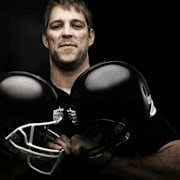Understanding Mechanical Tension in Strength Training

Mechanical tension is a key concept in strength training that often gets misunderstood. At its core, mechanical tension refers to the force that stretches muscle tissue during resistance training. Every workout involves three key phases: eccentric isometric and concentric. While mechanical tension is present in all three, it’s often associated most with the concentric phase, the part where muscles contract to overcome resistance, like when you’re lifting the weight.
Here’s where it gets interesting - takes much less force to perform isometric holds or eccentric movements compared to the concentric phase. That’s why you can usually handle more weight when lowering a load or holding a position, like in programs that emphasize these movements. Cal Dietz’s Triphasic training focuses on targeted muscle contractions like eccentrics, isometrics and concentrics. You can lower more weight under control during eccentric movements and hold a load in an isometric contraction, but when it comes to lifting the weight, actually fighting against gravity, you’re significantly weaker. This is the concentric phase, and its where mechanical tension comes into play.
When training for mechanical tension, the goal is to push the muscle to its limits during the concentric phase. Yes, isometric holds and eccentric movements fatigue the muscle and create tension, but the real challenge, and growth, happens when you can no longer lift the weight. That’s when the muscle hits failure, which is the sweet spot for maximizing strength and hypertrophy. You’re not just moving the weight; you’re pushing through resistance until your body can’t go any further, and that’s the stimulus your muscles need to adapt and grow.
So, while it’s important to incorporate isometric holds and focus on lowering weights with control (eccentrics), the heart of mechanical tension lies in reaching muscle failure during the concentric contraction. This is where true muscle growth happens, when you push your muscles to their absolute limit and create the conditions for them to rebuild stronger and bigger.
